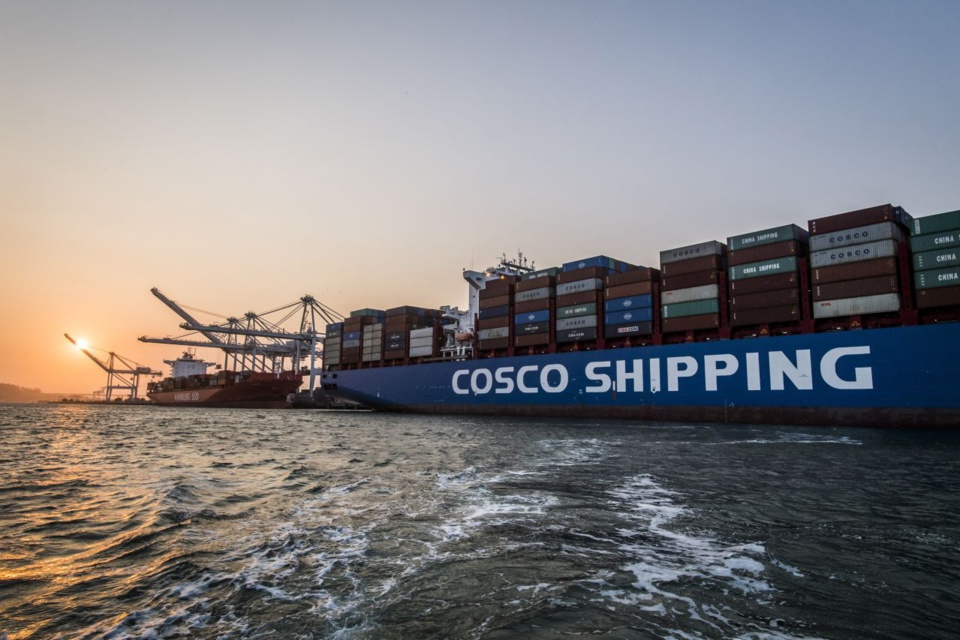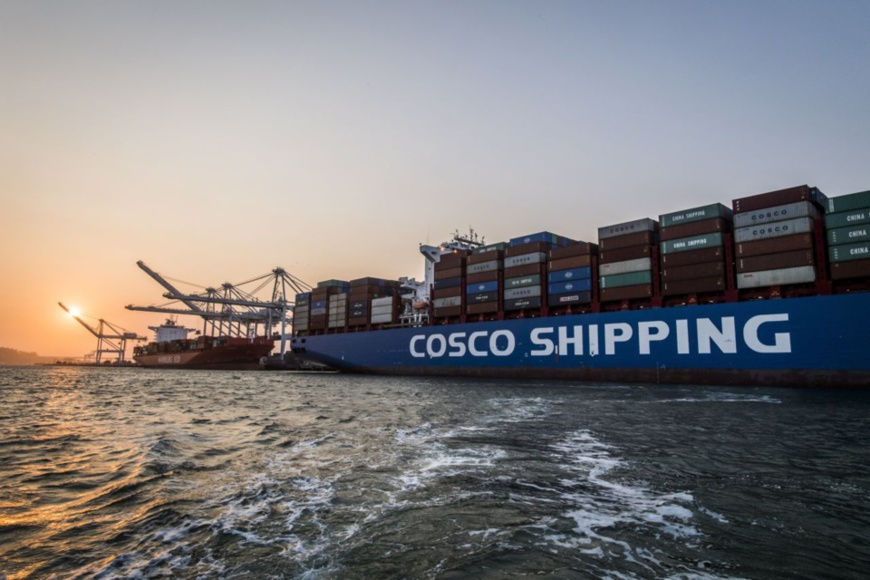By Zhang Jianping
Since the US unilaterally ignited the trade war against China, it has always been criticizing the latter for taking huge advantages in their bilateral trade. However, it is the US itself that has been making extra profits from its trade with China.
It is important to be aware that the trade deficit of the US is caused by the characteristics of its own economy. Being a highly developed economy, the US relies heavily on the service and high-tech sectors. The manufacturing industry only accounts for about 20 percent of the country’s GDP, while the rest 80 percent goes to the service sector.
The US doesn’t produce many middle- to low-end products, thus relying on imports in this very field. In addition, with a borrow-and-spend mentality, the US residents are not saving much.
A big part of China’s profits gained from its trade with the US goes back to America in the form of national debt because of the high saving rate in China. China is seemingly enjoying a trade surplus against the US, but is indeed contributing to the US consumption and its government expenditures.
Many Chinese are buying insurance or commodities in the US during their trips or overseas study there, making the US enjoy a service surplus against China of nearly $100 billion. However, the Donald Trump administration has kept its mouth shut in this respect.
Behind this is the role of the US dollars as a dominant international currency. When a large number of US dollars flow out of the capital account, a current account deficit is often needed for balance. Such economic characteristic of course leads to trade deficit of the US, who has to increase its import from other countries even if it cuts the number from China.
In addition, the cost-efficient Chinese commodities are what keep the low inflation of the US. Even though the US has adopted quantitative easing policy since the 21st century, its inflation rate has been kept at a relatively low level of about 2 percent, and one important reason of this is the stable price of Chinese exports.
For instance, neither the US politicians nor consumers know that China only earns $5.96 by assembling an iPhone. They don’t know what the displaced Chinese workers are facing to manufacture products for Apple Inc. and the US.
If the US unreasonably imposes extra tariffs on the $200 billion worth of Chinese products, the tariff increase of the huge amount of consumer goods and agricultural products will be finally transferred to the US consumers by the importers.
So far the US has seen a dramatic rise in the price of washing machines, as well as nail makers going broken because of the soaring steel price. The country is predicted to encounter rising inflation and louder complaints from the consumers. It will become an important argument for the objection of Trump’s tariff policy.
Furthermore, one should not only depend on trading volume and trade surplus to judge whether China or the US is benefiting more from their bilateral trade. Commercial profit is also a vital index in this regard.
China does have a surplus against the US in terms of trading volume, but the added value and profitability of Chinese commodities are very limited since many of the key parts of these made-in-China products are imported from the US and other developed economies.
Though the value of US export to China is relatively low, the US has a higher added value and profitability from these products. If mutual investment between the two countries is taken into consideration, it can be found out that the US total investment in China is much higher than the other way around.
In addition, the US enjoys a very high return on investment (ROI) in China. For instance, the American company General Motors can register a double-digit ROI from its automobile business in China.
Statistics showed that the ratio between the total investment and profit made by the US enterprises in China and that made by Chinese enterprises in the US stood at 4:3, which indeed suggests extra advantages for the US in the economic exchanges between the two countries.
Lastly, we must see which party is getting the largest share of profits in China-US trade. Again, in the case of iPhone, the Apple Inc. can get about 40 percent of the total profit on the value chain through intellectual property and its marketing network, while 35 percent of the profit goes to German manufacturers of fine parts, Japanese display makers and South Korean semi-conductor producers, leaving only about 5 percent of the total profit to Chinese assemblers.
Moreover, auto engines and gears from the US and other developed countries are always the most profitable parts on the vehicles exported by joint-ventured car makers located in China.
Given that 60 percent of Chinese exports to the US are manufactured by foreign enterprises, it is the US multinationals in China that are the largest beneficiary, rather than Chinese assemblies.
In general, the imbalanced trade between China and the US is not a result of globalization, vertical specialization, or the differences between the two country’s economic structures.
The US, as a developed country, has gained huge profits through its control over patented technologies and the design work on core parts, as well as the high-value added links such as the marketing network. It is in a dominant position in the investment and trade activities.
However, the Trump administration turns a blind eye on this and initiated the trade war against China in the excuse of the imbalanced trade between the two countries. Such excuse is totally unjustifiable.
(By Zhang Jianping, deputy director of the Academic Steering Committee of the Chinese Academy of International Trade and Economic Cooperation of the Ministry of Commerce, and director of the research center for regional economic cooperation under the Ministry of Commerce)
(People’s Daily/Global Times)
It is important to be aware that the trade deficit of the US is caused by the characteristics of its own economy. Being a highly developed economy, the US relies heavily on the service and high-tech sectors. The manufacturing industry only accounts for about 20 percent of the country’s GDP, while the rest 80 percent goes to the service sector.
The US doesn’t produce many middle- to low-end products, thus relying on imports in this very field. In addition, with a borrow-and-spend mentality, the US residents are not saving much.
A big part of China’s profits gained from its trade with the US goes back to America in the form of national debt because of the high saving rate in China. China is seemingly enjoying a trade surplus against the US, but is indeed contributing to the US consumption and its government expenditures.
Many Chinese are buying insurance or commodities in the US during their trips or overseas study there, making the US enjoy a service surplus against China of nearly $100 billion. However, the Donald Trump administration has kept its mouth shut in this respect.
Behind this is the role of the US dollars as a dominant international currency. When a large number of US dollars flow out of the capital account, a current account deficit is often needed for balance. Such economic characteristic of course leads to trade deficit of the US, who has to increase its import from other countries even if it cuts the number from China.
In addition, the cost-efficient Chinese commodities are what keep the low inflation of the US. Even though the US has adopted quantitative easing policy since the 21st century, its inflation rate has been kept at a relatively low level of about 2 percent, and one important reason of this is the stable price of Chinese exports.
For instance, neither the US politicians nor consumers know that China only earns $5.96 by assembling an iPhone. They don’t know what the displaced Chinese workers are facing to manufacture products for Apple Inc. and the US.
If the US unreasonably imposes extra tariffs on the $200 billion worth of Chinese products, the tariff increase of the huge amount of consumer goods and agricultural products will be finally transferred to the US consumers by the importers.
So far the US has seen a dramatic rise in the price of washing machines, as well as nail makers going broken because of the soaring steel price. The country is predicted to encounter rising inflation and louder complaints from the consumers. It will become an important argument for the objection of Trump’s tariff policy.
Furthermore, one should not only depend on trading volume and trade surplus to judge whether China or the US is benefiting more from their bilateral trade. Commercial profit is also a vital index in this regard.
China does have a surplus against the US in terms of trading volume, but the added value and profitability of Chinese commodities are very limited since many of the key parts of these made-in-China products are imported from the US and other developed economies.
Though the value of US export to China is relatively low, the US has a higher added value and profitability from these products. If mutual investment between the two countries is taken into consideration, it can be found out that the US total investment in China is much higher than the other way around.
In addition, the US enjoys a very high return on investment (ROI) in China. For instance, the American company General Motors can register a double-digit ROI from its automobile business in China.
Statistics showed that the ratio between the total investment and profit made by the US enterprises in China and that made by Chinese enterprises in the US stood at 4:3, which indeed suggests extra advantages for the US in the economic exchanges between the two countries.
Lastly, we must see which party is getting the largest share of profits in China-US trade. Again, in the case of iPhone, the Apple Inc. can get about 40 percent of the total profit on the value chain through intellectual property and its marketing network, while 35 percent of the profit goes to German manufacturers of fine parts, Japanese display makers and South Korean semi-conductor producers, leaving only about 5 percent of the total profit to Chinese assemblers.
Moreover, auto engines and gears from the US and other developed countries are always the most profitable parts on the vehicles exported by joint-ventured car makers located in China.
Given that 60 percent of Chinese exports to the US are manufactured by foreign enterprises, it is the US multinationals in China that are the largest beneficiary, rather than Chinese assemblies.
In general, the imbalanced trade between China and the US is not a result of globalization, vertical specialization, or the differences between the two country’s economic structures.
The US, as a developed country, has gained huge profits through its control over patented technologies and the design work on core parts, as well as the high-value added links such as the marketing network. It is in a dominant position in the investment and trade activities.
However, the Trump administration turns a blind eye on this and initiated the trade war against China in the excuse of the imbalanced trade between the two countries. Such excuse is totally unjustifiable.
(By Zhang Jianping, deputy director of the Academic Steering Committee of the Chinese Academy of International Trade and Economic Cooperation of the Ministry of Commerce, and director of the research center for regional economic cooperation under the Ministry of Commerce)
(People’s Daily/Global Times)
 Menu
Menu
 Commentary: US is gaining extra profits in its trade with China
Commentary: US is gaining extra profits in its trade with China

















